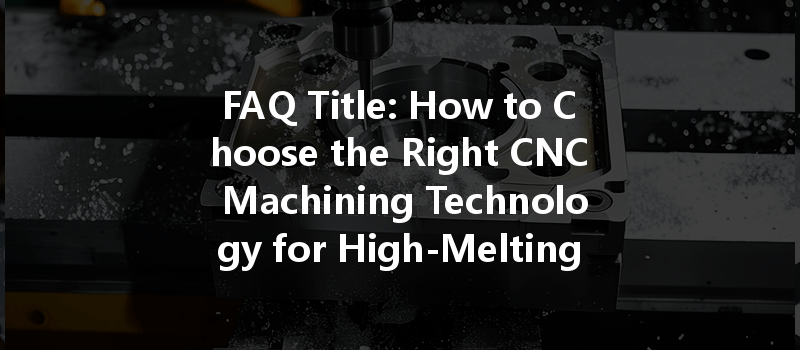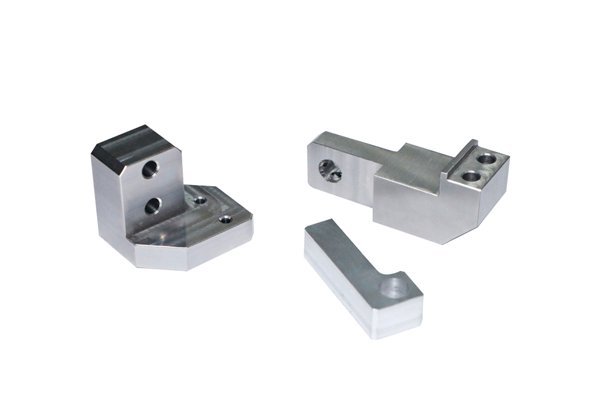Did you know that more than 70% of the world’s manufacturing processes rely on advanced CNC machining techniques to produce highly durable components from tough materials? Machining technologies are crucial when working with high-melting point steel, which can become a challenge for many manufacturers looking to maintain efficiency while ensuring quality. The selection of the right CNC machining technology is paramount, as it can significantly affect production outcomes, operational costs, and overall product quality.
In this comprehensive guide, we will explore the various CNC machining technologies applicable to high-melting point steel, detailing solutions, techniques, and considerations for optimizing efficiency. Let’s take your manufacturing processes to the next level!
Understanding High-Melting Point Steel
High-melting point steels are materials that have high resistance to deformation and significant strength at elevated temperatures. Common high-melting point steels include alloys like Inconel, Waspaloy, and titanium-based alloys. These materials feature melting points typically above 1,400°C (2,552°F), presenting challenges in machining due to their toughness, brittleness, and heat-generation characteristics during processing.
Challenges of Machining High-Melting Point Steel
Before diving into the solutions, it’s essential to understand the specific challenges when machining high-melting point steel. Here are some key obstacles manufacturers face:
Selecting the Right CNC Machining Technology
When it comes down to choosing the appropriate CNC machining technology for high-melting point steel, several factors play a crucial role including the type of material, tool selection, machining parameters, and post-machining processes.
CNC turning is an effective method for machining cylindrical parts from high-melting point steels. It involves rotating the workpiece while a stationary cutting tool removes material. The advantages include:
Best Practices for CNC Turning:
CNC milling involves removing material from the workpiece using rotating cutting tools, suitable for complex shapes. The benefits of CNC milling for high-melting point steel are:
Best Practices for CNC Milling:
EDM is a non-traditional form of machining that uses electrical discharges to erode material from the workpiece. It is particularly useful for high-melting point steels because:
Best Practices for EDM:

Laser cutting and waterjet cutting are alternative methods for working with high-melting point steel, with their own sets of advantages:
Best Practices for Laser and Waterjet Cutting:
Establishing Operational Parameters for Enhanced Efficiency
Selecting the right technology is just the beginning. Establishing optimal operational parameters significantly contributes to machining efficiency.
Cutting speeds and feed rates are crucial factors that influence the outcome of CNC machining. Finding the ideal balance maximizes efficiency without risking defects.
Cooling is essential when machining high-melting point steel to prevent tool wear and ensure part integrity.
Selecting the right tools is foundational for high-efficiency machining.
Post-Machining Considerations
After selecting the right technology and optimizing machining parameters, post-machining processes become the final step to ensure the quality of components.
High-melting point steel components often require additional surface treatments to enhance their performance.
Implementing rigorous quality control measures ensures that the high-melting point steel components meet industry standards and specifications.
Selecting the right CNC machining technology for high-melting point steel is a multi-faceted process that requires a meticulous understanding of material properties, machining technologies, operational parameters, and post-processing techniques. By following the best practices and leveraging innovative machining approaches, manufacturers can enhance efficiency, reduce costs, and maintain the highest quality standards.
As industries evolve, so will the materials and methods employed, making it vital for professionals to continually educate themselves about advanced machining technologies. The importance of this blog cannot be overstated, as it encapsulates essential insights and strategies that can help manufacturers thrive in a competitive landscape. So, as you consider the future of your machining processes, remember that informed choices today will pave the way for your success tomorrow!






